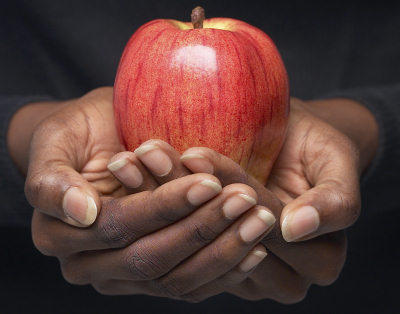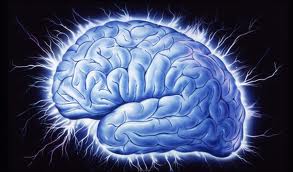The intention of this essay is to provide evidence as to how the non-nurturing quality of some mothers may have a permanent psychological effect on their children. According to the British Journal of Psychiatry, mothers who were depressed, refused to breast-feed or were absent in their infant’s day-to-day life were 63% more likely to have children with eating disorders, OCD (Obsessive Compulsive Disorder) and borderline personality disorder. A study conducted over one year revealed that two month old infants who had at least one hour of face-to-face play with their mothers everyday were significantly less likely to develop these disorders. Conversely, the same study showed that infants who did not have this interaction with their mothers developed some characteristics of these disorders in the first two months of life. These early signs of psychological disorders (OCD, BPD and over/under-eating) included hostility, loss of sleep, avoidance of eye-to-eye contact or play and refusal to eat. The study indicated that mothers who were sensitive (as opposed to angry or depressed) and engaged in positive face-to-face play had more success in raising a healthy, happy and fast-learning child. Older studies conducted in the early 1970s indicated that these disorders (or lack there of) stayed with and evolved in these children throughout their lives. This study was based on how people perceived their mothers (abusive, absent or kind and nurturing) and what these people thought of themselves (ill-advised, ill-mannered or intelligent and thoughtful). The participants in this study were also asked if they had any personality disorders such as Obsessive Compulsive Disorder or anorexia. The study showed that more than half of these people who described their mothers as abusive or absent thought badly of themselves and also had certain personality disorders or eating disorders. About three-hundred people were tested. However, just because mothers have certain disorders does not mean these disorders will be passed on to their children. Several studies conducted in early 2010 provided evidence that mothers with OCD could have very happy and sophisticated children that did not develop OCD. These mothers engaged in an hour of playtime with their infants everyday in the infants’ first two months of life; out of sixteen children, only one of them developed OCD. So, as you can see, as long as mothers engage in positive activities with their children, there is very little chance of the child developing any personality disorders.
Now we must discuss early childhood. Most parents know that toddlers and young children need the utmost supervision and care. Most children possess the ability to develop their own personal opinions and preferences by the age of seven; signs of the before mentioned disorders in addition to homosexuality and emotional disorders can usually be noticed by this time1. The inventor Nikola Tesla is said to have developed Obsessive Compulsive Disorder at the age of five after the death of his brother, Daniel. This disorder, in addition to hemophobia (fear of blood), arachnophobia (fear of spiders) and mysophobia (fear of dirt), stayed with him from the age of five until his death in 1943. Although it is not a proven fact, it is suspected that Tesla’s parents disowned him at an early age because of his suspected involvement in Daniel’s death. Certain disorders and phobias can be cured but require years, perhaps even decades, of work. It is best to avoid the development of these disorders in the first place by being a forgiving yet disciplinary and accepting parent. We must now discuss the most serious disorder caused, in large part, by emotional and physical abuse in the early stages of life: Borderline Personality Disorder (BPD). There is strong evidence to support a link between distressing childhood experiences, particularly involving caregivers, and this disorder. The types of experiences that may be associated with BPD include, but are not limited to, physical and sexual abuse, early separation from caregivers, emotional or physical neglect, and parental insensitivity. Marsha Linehan, the developer of Dialectical Behavior Therapy for BPD, believes that the disorder is caused by an interaction between biological factors and an “emotionally invalidating” childhood environment (or an environment where the child’s emotional needs are not met). It is important to remember, however, that not everyone who has BPD has had these types of childhood experiences (although a large number have). Furthermore, even if a person does have these types of experiences, it does not mean that they will have BPD. The three main symptoms of Borderline Personality Disorder are impulsivity, emotional instability and inability to maintain healthy relationships. People with BPD also experience the inability to remember and often suffer from autism or Alzheimer’s. BPD also leads to severe weight-gain and (in the most serious cases) seizures. People with BPD are more likely to experience severe depression, apathy and drug addiction.
In 2011, it was announced that 6% of Americans have BPD2. Of this percentage, 6% were upper class, 33% were middle class, 47% were working class and 14% were unemployed or living in poverty. Statistics show that one in ten people with the disease needlessly commit suicide. The best treatment available is to get away from anyone or anything that depresses you, gradually eliminate the symptoms (over-eating, phobias, forgetfulness, impulsivity or OCD) and find things that you enjoy doing. For people with BPD who find it too difficult to eliminate these symptoms, therapy and medications may be utilized. In the next few paragraphs I will explain how to rid yourself of these symptoms; however, the best advice I can give anyone is to treat your children with kindness and prevent these symptoms from affecting your child altogether.
Almost everyone has an irrational fear or two, such as a fear of heights or illness. However, when fears become so severe that they interfere with your normal life they are called phobias. It is important to know that phobias can be managed and cured. Self-help strategies and therapy can help you overcome your anxiety and fears and get on with your life. Common phobias and fears include closed-in places, heights, highway driving, flying insects, snakes, and needles but we can develop phobias about virtually anything else. One of the strangest phobias I have discovered is arachibutryophobia: the fear of peanut butter! Most phobias develop in childhood, as we have seen with the inventor Nikola Tesla, but they can also develop in adults. If you have a phobia, you probably realize that your fear is unreasonable, yet you still can’t control your feelings. Just thinking about the feared object or situation may make you anxious. And when you’re actually exposed to the thing you fear, the terror is automatic and overwhelming. Understanding your phobia is the first step to overcoming it. It’s important to know that phobias are common. Having a phobia doesn’t mean you’re crazy! It also helps to know that phobias are highly treatable. You can overcome your anxiety and fear, no matter how out of control it feels.
The next step is to expose yourself to the object of the phobia as often as possible. Though this may seem impossible at first, this is one of the most effective treatments. Everyone has difficulty remembering things from time to time. We often forget things like where we placed our keys, people’s names, due-dates and birthdays. However, people with BPD often forget more important things such as their own names or where they are. When this happens it is important to seek help or begin working on the problem yourself. Brain foods such as whole grains, garlic, almonds and blueberries often reduce memory loss. Teas made from mint, chamomile or sage often help the mind function better, as well as your heart
and digestive system. I have been told numerous times that word games, number games and card games help cognitive function. Eating these brain foods and engaging in activities that enhance brain function help those who are, at times, forgetful as well as those who suffer from Alzheimer’s.
OCD is a very serious disorder that makes people compulsively do things a certain number of times; this disorder is often accompanied by the fear of numbers, such as the number thirteen (triskaidekaphobia), and ADHD (Attention Deficit Hyperactivity Disorder). People find this begins interfering with their everyday lives when it comes to the point they cannot control their urges in any way. People with OCD may be forced to walk
around the building three times before entering, turn the light switch on and off three times, clean the house three times in one day, etc. In some extreme cases, the victim of OCD believes that something horrible will happen to them unless they submit to these urges. The first step in treating OCD is to realize that nothing bad will happen if the victim does not act compulsively. If you have OCD, try to refrain from these compulsions for one full day. If nothing bad happens, you will realize that this disorder is merely an example of your mind playing tricks on you. Some OCD sufferers find that deep breathing, yoga and “doodling” (drawing nothing in particular – just drawing) helps to reduce their symptoms. Finally, remember to improve your symptoms gradually. Those who try to get rid of their symptoms immediately usually find that their symptoms return within a few days, sometimes even worse than before. For instance, if you hoard pens, try to get rid of one pen each day until your habit is cured. It should be noted that kleptomania, pyromania, trichotillomania, IED (Intermittent Explosive Disorder) and the act of hoarding are all extreme examples of OCD, but can be treated in the same way.
For those of you who are in doubt about whether or not you have BPD, the book “Are You Crazy?” by Andrew N. Williams has one easy quiz that proves the presence or absence of Borderline Personality Disorder. In this quiz there are nine questions; if you answer “yes” to at least five of them, there is a significant chance that you have BPD. I will list a few below:
• Do you tend to have unstable, tense relationships with many ups and downs?
• Do you frantically worry about being abandoned?
• Do you have difficulty deciding who you are and what you believe?
• Do you feel empty inside?
• Do others wonder why you are so angry?
• Under stress, do you feel detached?
All of these questions have to do with the fact that the person with BPD has, at times, felt abandoned, abused and unloved. People with BPD feel uncomfortable in any type of relationship because they feel the relationship will fail regardless of their attempts to foster it. This is accompanied by a fear of abandonment; the person who is suffering with BPD has most likely had experience with abandonment by either a parent or spouse. Those with the disorder often have trouble deciphering whether or not they believe in certain things, such as the existence of God. They are likely to “flip-flop” on certain issues. Accompanying the presence of numerous uncertainties is a feeling of being unfulfilled. This leads to the person with BPD turning to food, drugs, alcohol or other addictions to fill the void. This, however, could easily be treated by filling the void with a productive activity such as exercise, painting or writing. However, because of the constant “questioning of the self”, the person with BPD is likely to have bipolar disorder or IED. They tend to release their inner anger on family members or coworkers. Finally, when depressing situations arise, such as a death or divorce, the person will often feel detached from society. They may feel like the event didn’t happen and that the whole incident was just a dream. Because of this, it is difficult for the person to distinguish fantasy from reality.
Though it may prove difficult to believe, all of these symptoms stem from the first two months of life. In these first couple of months, the baby needs to be nurtured by both mother and father. These first months are critical in ensuring the baby has a healthy and emotionally strong lifestyle. If the baby is left alone in the crib too long, or without food, they will feel a sense of abandonment and being uncared for. Though it cannot speak nor walk, the baby has emotions that need to be tended to. The children of young mothers, those who are too busy to nurture the child or single moms tend to develop BPD because of the absence of the mother or father. After two months, the child further develops his emotions until age seven, when he or she can develop preferences and opinions. By the age of seven the child will have developed such traits as Democratic principles, Republican principles, homosexuality, phobias, an attraction to certain school subjects, favorite types of books, etc. In other words, a person’s personality and interests are almost fully developed by the age of seven. If children are taught to be bullies in the classroom before the age of seven, it is likely that they will bully people for the rest of their lives. This is why every parent and every caregiver should nurture the child and spawn within him (or her) an understanding or right and wrong before the age of seven. These first seven years (the first two months in particular) are the deciding factors for what the child will be like for the rest of his or her life.
If I may, I would like to return to the life of one of my heroes, Tesla. Nikola Tesla was nurtured by both parents in the first few years of his life; it was not until the age of five his parents began mentally abusing him. However, because this lack of forgiveness was instilled in him before the age of seven, he developed a disliking for most people. Although he was likely one of the smartest men the world has ever known, he died alone in a hotel room, penniless. This is not to say he was unsuccessful in life: in the 1890’s he supplied all of New York with wireless lighting and discovered the AC current. His fall in life came when he moved to America and was forced to compete with Thomas Edison. Edison had a completely different childhood; his mother nurtured him and home schooled him to ensure he had the proper education. He died a rich man with a loving family. Do you see the difference in these stories? Edison had a nurturing mother who helped him throughout his childhood. Tesla’s parents blamed him for the death of his brother and therefore left him to take care of himself. Tesla is never mentioned because he died a poor man who hoarded pigeons; Edison, however, became rich and famous. Could this all be the result of the amount of nurturing received as children? If Tesla had been part of a loving and forgiving family, would he receive just as much admiration today as Thomas Edison, the man who ensured he died penniless?
This is the question I am asking you to answer: do those first seven years of life pave the way for either a miserable or tremendous life? Regardless of whether the answer is “yes” or “no”, Tesla suffered from BPD and Edison did not. No matter who you are or what you have done, or for that matter, who your children are and what they have done, a child needs to be taught right from wrong but also needs to be loved and nurtured early in life. They did not ask to be born; it is the parent who brought them into this world. Therefore it is up to the parent to ensure the child gets all the love and care he or she needs. That is the difference between a child being successful, kind and happy in life or having BPD. It is the difference between them becoming an Edison or a Tesla.




